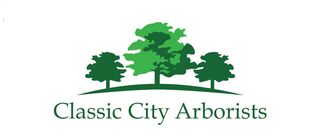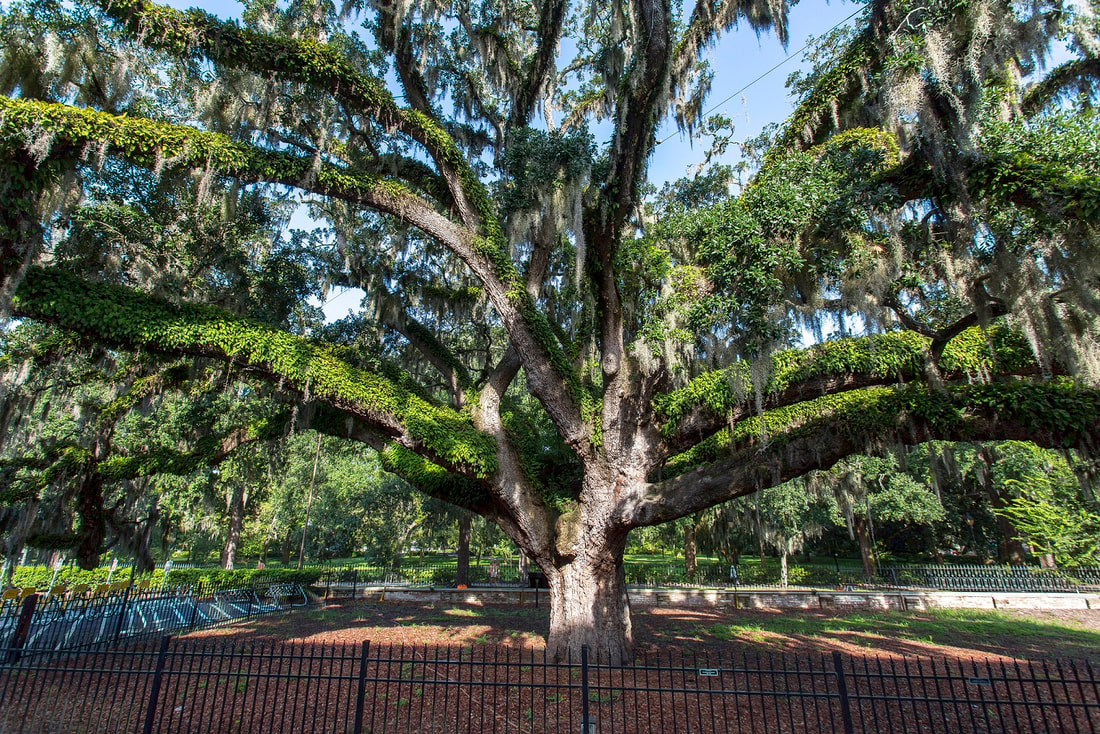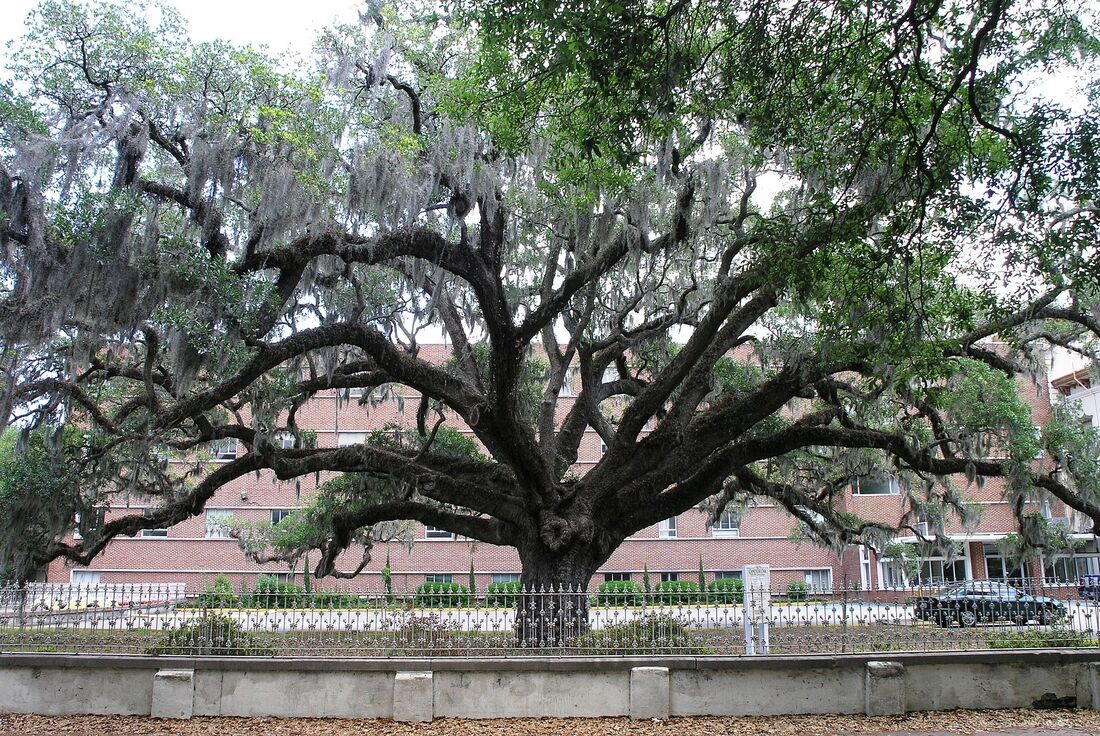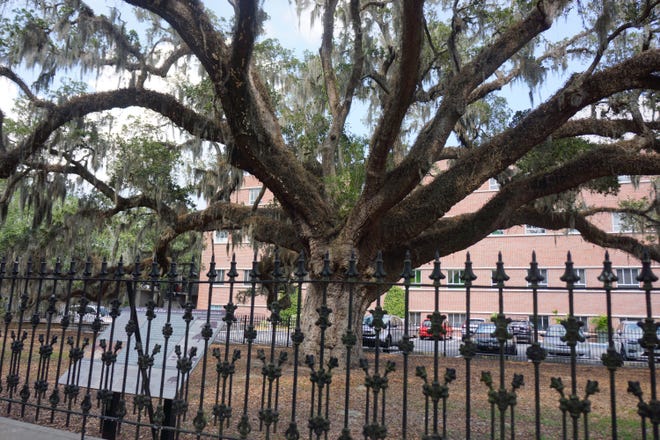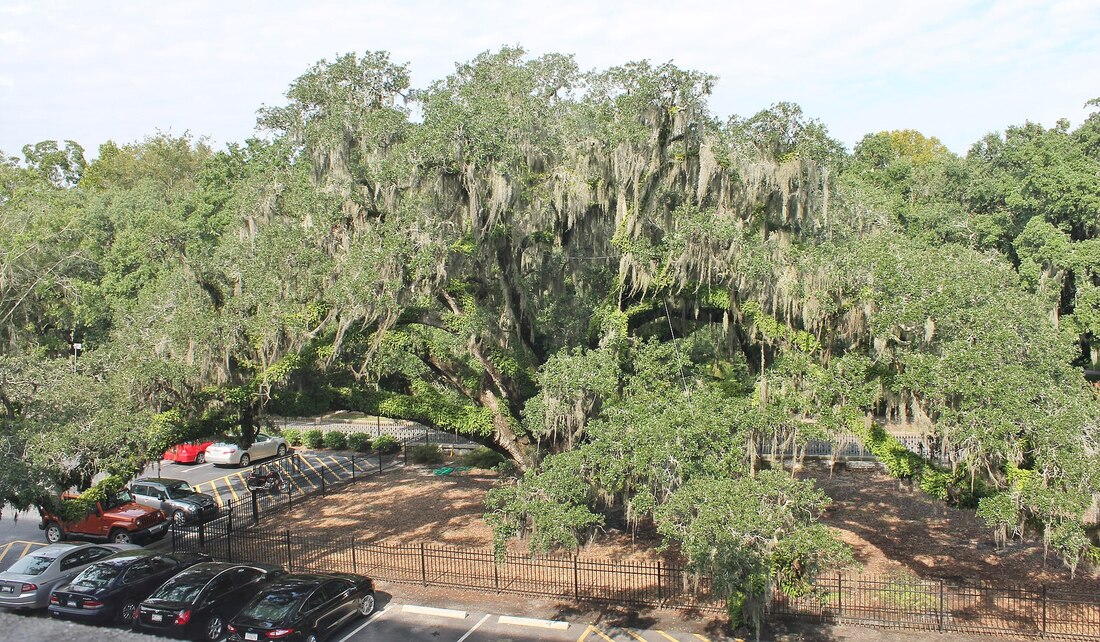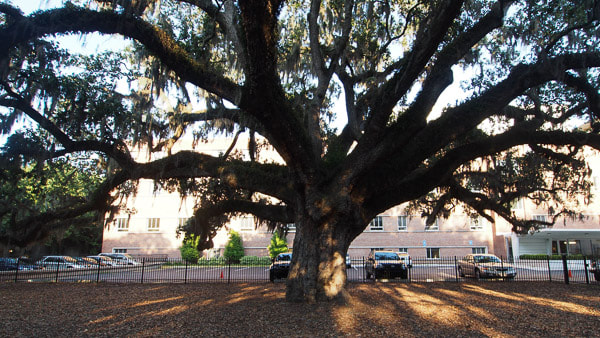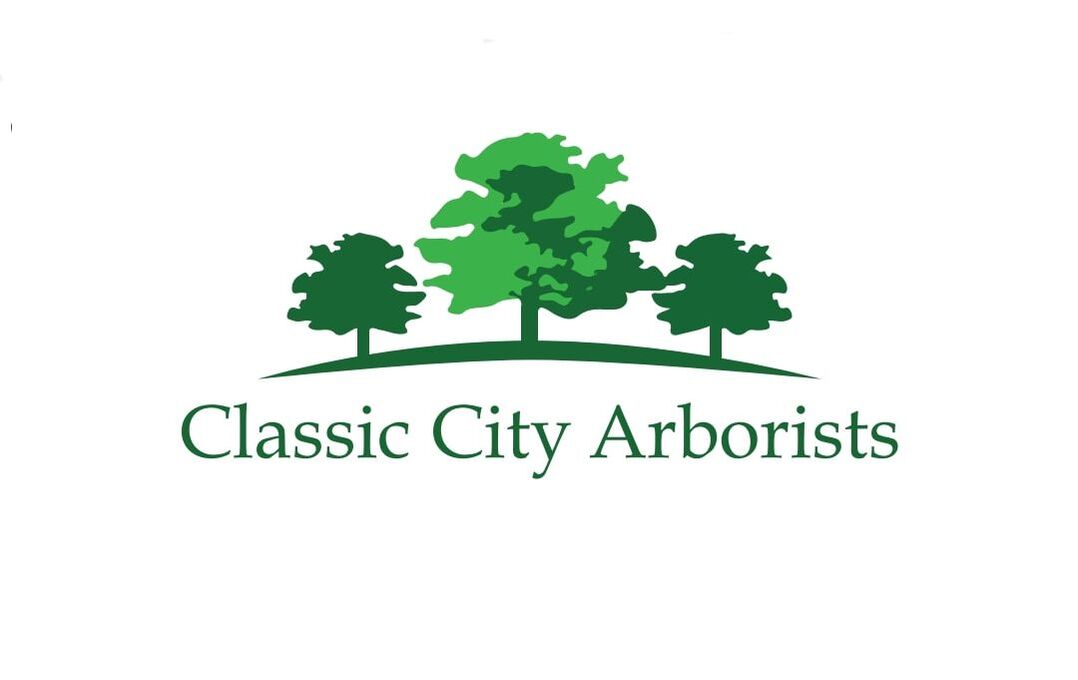|
News and Blog Articles
|
|
Whether you’re looking to spruce up your home’s curb appeal, need some shade for the kids in the backyard, or just want to fill up some empty space, planting trees is a great choice for any homeowner. But how do you make sure that the tree you plant actually survives into adulthood? Let’s walk through some tips that will help you grow a strong, healthy tree you can enjoy for years to come. Pick a TreeThe first thing you need to do when deciding to plant a tree is to figure out what you want to plant! To do that, you need to think about why you are planting a tree at all. If you’re looking to make your front yard more visually appealing, you’re probably in the market for a smaller, ornamental tree. Check out our article on the best trees to plant for decoration in Georgia if you need some ideas. On the other hand, if you’re hoping for some shade, then you definitely want a larger tree – but you also want one that grows pretty fast, so you’re actually around to enjoy it! Maybe you’re hoping to successfully grow fruit trees to enjoy the, er, fruits of your labor. Or maybe you want a privacy fence to create some distance between you and the neighbors. Whatever purpose you have in mind for your new tree, knowing ahead of time will help you decide what species to plant. Pick a SpotWhile you’re thinking about the type of tree you want, you should also start thinking about where you want to put it. For example, maybe you’re looking to add a flowering tree to the small garden bed by your front porch. You may consider the dogwood, but these babies can still get pretty tall and wide, and their root system definitely needs some space to spread out, meaning that small garden bed might actually be too small, and your tree won’t be able to flourish. On the other hand, if you have a wide-open space with no other plants in sight, then you’ll need to keep in mind that whatever you plant there is going to be exposed to the elements with no protection whatsoever. That means you need something with a strong root system and a hardiness to winds, rains, and sunshine – like the water oak! While you’re thinking about where you want to plant, remember to account for the roots. One of the biggest reasons trees fail is because their roots don’t have enough room to spread out, so the tree can’t get enough nutrients to survive. You also want to watch out for the roots, because they can do some serious damage to anything nearby, like your driveway or even your home’s foundation! Pick a TimeThe last thing you want when you plant a new tree is for the first freeze of the winter season to kill it off, so be sure to think about what time of year it is when you start looking to plant. A good rule of thumb for planting new trees is at the tail-end of winter, right before the weather really starts to warm up for spring. In the Athens area, that usually means around March, or right now! Get PlantingOnce you’ve got the what, when, and where figured out, it’s time to actually plant your new tree. The basics? Dig a hole, put the new tree in it, and cover the tree with dirt. But there are a lot of factors to consider during these steps: Dig Wide The hole should be 2 to 3 times wider than the root ball itself. You’ll fill this empty space back up with looser soil when you cover the root ball, and this will make it easier for fledgling roots to spread out and get established. Dig Deep – but not too deep! When you cover the root ball back up, you want the trunk flare to just barely be visible above the dirt. The trunk flare is the point where the trunk flares out at the very base of the tree. This flare can be subtle, but that is the point that you want the soil to reach. Make sure when you’re digging that your hole is deep enough that the trunk flare will sit just above the ground. Unwrap and Unbind Some trees come with netting or even wire cages around the root ball. This is done to keep the roots together and protected during transport, but when you’re ready to plant, these obstructions need to be removed. Otherwise, they may hinder root growth and cause your tree to fail. Straighten Up This is more of an aesthetics thing, but try to plant your tree as straight up and down as possible. If your tree is planted crooked, there’s a good chance it will grow crooked, too – at least at first. The base of the tree might go off at an angle before growing straight up, giving your trunk a curve to it for the rest of its life. Cover Up Once you’ve ensured that your tree is in a hole of proper width and depth, and the tree is standing up straight, it’s time to cover the roots with soil. The end goal here is to have packed but not compacted soil – so pack it down as you go, and water every few layers to help reduce air bubbles, but don’t try to compact the soil as hard as you can. You want it loose enough for the tree’s roots to be able to navigate easily, but not so loose that the roots don’t have anything to hold onto as they grow. Stake Out Once the soil is in place, it’s time to decide whether your new tree needs stakes. Generally, you want to avoid stakes if possible; studies have shown that trunks and root systems establish quicker and stronger on their own. But if your tree is in a windy, exposed area, staking might be your only choice. After Care Once your tree is planted (and staked, if need be), it’s time to think short- and long-term care. One of the best things you can do for a new tree is to mulch the ground around it. Think 2 to 3 inches, with a thinner layer at the base of the trunk. This will help the ground around the tree retain much-needed moisture without creating an environment for trunk rot. From there, you’ll want to water your tree about once a week. If it rains, you can consider that the week’s watering. If you end up in a long, hot dry spell, then you may want to up that to two waterings a week. So there you have it! All the basics you need to successfully plant a new tree. If you still aren’t sure, and want more advice on what or where to plant, feel free to give us a call! Our Certified Arborist, Scott, is always happy to offer his professional opinion. If you’ve planted a new tree and you’re concerned about its health, consider scheduling a free estimate with us! We’ll come out to make sure everything’s okay, and offer some solutions if they aren’t. AuthorEmily Casuccio is sister and sister-in-law to Rebekah and Scott Rushing, and has over half a decade of experience in copywriting, copyediting, proofreading, and developmental storyboarding. She's worked with both published and undiscovered authors on both fiction and nonfiction, and takes pride in supporting local businesses. Her passion lies in the written word and helping authors of all capacities realize their dreams and achieve their fullest potential. To learn more about her, read samples of her work, or contact her, visit her online portfolio.
0 Comments
With spring just around the corner, Athens is in for a colorful transformation any day now. Between the various city-scaping, crepe myrtles, Bradford pears, and other flowering trees, everywhere you look you’ll see flowers blooming. But today we’re here to talk about one of the prettiest flowering trees of all: the Eastern redbud. Scientifically known as Cercis canadensis, and sometimes colloquially referred to as the Judas tree, the Eastern redbud is a medium-sized species famous for its stunning display of pinkish-purple blooms. Though they don’t offer much in the way of fall color, these trees are still highly popular for ornamental use in backyards and parking lots alike, thanks to their stunning spring display and low-effort maintenance. To start, they aren’t picky about their soil. Eastern redbuds can thrive in acidic, alkaline, loamy, moist, rich, sandy, well-drained and clay soils, making them well-suited to the Georgia red clay found everywhere in this area. They prefer full sun to partial shade, needing about 4 to 6 hours of direct sunlight a day to thrive – not a big ask here in the South. Their moderate watering requirements once established are usually met by the average rainfall here, so beyond watering when you first plant one, you don’t have to worry about them much. Eastern redbuds are also one of the faster-growing tree species, so you won’t have to wait long for your landscape design to come together. You will easily see between 1 to 2 feet of height growth per year until your tree reaches maturity. You won’t have to wait long for flowers, either, as these trees can start showing off as early as four years old! On average, Eastern redbuds will top out around 20 to 30 feet tall, with a similar crown spread averaging 25 to 35 feet wide. This makes them the perfect size for the average front or backyard – big enough that you can’t miss it, but small enough that you don’t have to fear it falling on your house or shed! Most Eastern redbuds will feature one or more short trunks with a tall, rounded crown (sometimes compared to the shape of an umbrella). The crown is comprised of visually engaging, zig-zagging branches and twigs. The leaves of the Eastern redbud are idyllically heart-shaped and average between 3 to 5 inches long, putting them squarely on the larger end of the leaf size spectrum. When they first emerge in their alternating pattern, they range from deep red to reddish-brown in color before turning dark green for the summer. In the fall, they pale to a green-ish yellow. The bark of the Eastern redbud is generally gray with scales, giving the trunk and thicker branches some interesting texture to show off in the colder months. New growth comes in dark reddish-brown to black, setting up the perfect contrasting background for the real star of the show: the flowers. As early as April, the Eastern redbud beings to develop pea-like flowers that range from light pink to pinkish-purple in color, often with varying shades present on a single petal. As a ramiflorous species, the flowers and fruit grow on bare branches, usually before any leaves appear. With no green to break up the view, the Eastern redbud in full bloom presents a stunning picture of bright pink purple flowers that stand out starkly against their darker branches. These pretty flowers yield brownish-black pods, known as legumes, that average 2 to 3 inches long. Often, these seed pods will linger on the tree well into the winter, before finally dropping to be dispersed by local wildlife. AuthorEmily Casuccio is sister and sister-in-law to Rebekah and Scott Rushing, and has over half a decade of experience in copywriting, copyediting, proofreading, and developmental storyboarding. She's worked with both published and undiscovered authors on both fiction and nonfiction, and takes pride in supporting local businesses. Her passion lies in the written word and helping authors of all capacities realize their dreams and achieve their fullest potential. To learn more about her, read samples of her work, or contact her, visit her online portfolio. Think about Savannah, Georgia – what do you see? If you’re anything like us, that answer starts with live oaks and ends with Spanish moss. There’s nothing more integral to the aesthetic of the Georgia coast than those ancient trees, with their graceful, sweeping branches spreading far and wide, draped in swathes of delicate, fluffy Spanish moss. It’s no surprise, then, that one of these stunning eldritch figures has been declared a national landmark. The Candler Oak is estimated to be between 350 and 450 years old, making it one of the oldest living landmarks in the area. It stands over 54 feet tall, with branches stretching over 110 feet wide. The trunk itself is more than 5 feet across! But the age and stature of this magnificent specimen isn’t the only thing that makes it special. Back in the early 1800s, the tree stood on the Savannah House and Hospital grounds. The picturesque oak was a statement piece, making the hospital easily identifiable. During the Civil War, while the hospital was used by the Confederacy, the tree protected POWs in stockades built under its branches. The hospital returned to being a hospital after the war, now called the Warren A. Candler Hospital – hence the name of the tree today, the Candler Oak. The grounds surrounding the tree were developed alongside the rest of Savannah. Construction, parking lots, foot traffic, automobiles, exhaust, and the general impact of daily business activity started to take its toll. The Candler Oak went into severe decline in the mid-1900s, with its life expectancy down to a mere 20 years by the 1970s. Luckily, the citizens of Savannah swept in to save the day. Concerned for the state of this historic tree, they formed the Savannah Tree Foundation in 1982. Its mission? To protect and preserve Savannah’s trees amidst its urban development. Their first project was fighting to protect the Candler Oak, which they hoped to save. The foundation made history when they secured a conservation easement for the oak in 1984, the first conservation easement granted for a single tree in the nation. This monumental victory protected the 6,804 square foot area surrounding the tree from further development, which was the first step in ensuring the tree’s survival. The owner of the hospital property at the time, a corporation called Huntingdon II, Ltd., donated the easement to the Savannah Tree Foundation that same year so they could take the proper steps necessary to revive the oak. Huntingdon II, Ltd. continued to support the tree’s rehabilitation monetarily in the years to come. The first thing the Savannah Tree Foundation did was dismantle the asphalt paved over the tree’s root system. Then, a strict regimen of watering, fertilizing, and maintenance was established to help the oak bounce back from its decline. Under the close eye of the foundation (and with the continued patronage of the Candler Hospital) the Candler Oak began to thrive again. Arborists today have issued the tree a clean bill of health, predicting its lifespan to last well into the end of the 21st century. In 2001, the Georgia Urban Forest Council registered the Candler Oak as a Georgia Landmark and Historic Tree, granting the already-popular landmark statewide recognition and protection. The National Register of Historic Trees recognized the Candler Oak in 2004. In 2012, the Savannah Law School purchased the property on which the Candler Oak’s easement resides. The school named the tree their official school logo, and erected a fence around the tree to preserve enough space for the lowest branches to continue to grow. They also added security surveillance against vandalism. After the Savannah Law School closed in 2018, the land the Candler Oak resides on was purchased by the Savannah College of Art and Design, better known as SCAD. To this day, the tree enjoys 24-hour surveillance, fenced protection, plenty of growing space, and a regular maintenance schedule, making it one of the most pampered trees in the state. Want to learn more about live oaks? Check out our Tree of the Month article! AuthorEmily Casuccio is sister and sister-in-law to Rebekah and Scott Rushing, and has over half a decade of experience in copywriting, copyediting, proofreading, and developmental storyboarding. She's worked with both published and undiscovered authors on both fiction and nonfiction, and takes pride in supporting local businesses. Her passion lies in the written word and helping authors of all capacities realize their dreams and achieve their fullest potential. To learn more about her, read samples of her work, or contact her, visit her online portfolio. Biodiversity is one of those words that you’ve definitely heard before, though you might not 100% understand what it means. Though the term biodiversity itself actually refers to all life on earth, from the smallest gene in your cells to entire thriving ecosystems, the word has taken on a more colloquial definition in recent years. What is biodiversity?Nowadays, biodiversity is used to describe the variety of life (typically plant life) in a given location – for example, your backyard. Environmentalists have spearheaded the movement to encourage homeowners and renters alike to consider planting a range of different native species. Why is biodiversity important?There are a lot of reasons to bring in more plants, like growing your own food and supporting the pollinator population. And greenery is just plain good for humans, mentally and physically. But biodiversity specifically promotes bringing in not just more plants, but different plants. The more species you have in one location, the richer that particular little ecosystem becomes. Rich ecosystems tend to thrive, as every species fills its own niche purpose. What does that mean?Let’s try an example. Think of a house – what makes a good house? You need a bedroom for sleeping. A kitchen for cooking. A living room. A bathroom (probably more than one, if you don’t live alone). You also need things like a door to get in, and windows for light and that cool fall breeze. A house that’s missing some of these things wouldn’t be very functional. How would you prepare food if you didn’t have a kitchen? How would you sleep if you didn’t have a bedroom? How would you get in if you didn’t have a door? On the other hand, a house that has a lot of only a few of these things wouldn’t be very functional, either. What use do you have for four kitchens, but no bathroom? Or seven bathrooms, but no door to get in? You don’t just need a house with a lot of components; you need a house with a lot of different components. There’s a bare minimum of these different components that you need to have in order to qualify as a ‘house’ at all. Bedroom, bathroom, kitchen, door. But the more components a house has, the more desirable it is. A house with five bedrooms, three bathrooms, a kitchen, a living room, a sitting room, a front and a back door, and plenty of windows would definitely make a killing in today’s market. The bare minimum makes a house functional, but the extras make it flourish. How does that translate to ecosystems?Different species in an ecosystem are like the different components of a house. Any given ecosystem needs a variety of both plants and animals to function, and even more to thrive. What does that mean for you?Biodiversity at large isn’t really something you have control over, but what you can control is the little ecosystem around your home. By planting not only more plants, but a bunch of different plants, you’re encouraging biodiversity. The best way to do this is to plant native species. Then you’ll have a home-court advantage; native species have adapted specifically to your area, like average rainfall and sunshine, soil composition, and temperature fluctuations, so you won’t have to do nearly as much work for them to do well. Not only that, but by only bringing in native plants, you can make sure you aren’t accidentally bringing in any invasive species, which can harm your ecosystem. What about animals?What’s that line? Build it, and they will come. There’s no need to think about introducing more fauna to your ecosystem. If you bring in more plants, then more insects will flock to the newly-available food source. Birds will follow, as there are yummy insects and berries to eat, and plenty of foliage for building nests. Butterflies and bees will wander around, cross-pollinating everything in their quest for nectar. It all starts with youJust think of it: if everyone in your neighborhood added one or two native plants to their property, that would be dozens – if not hundreds – of new plants in the local ecosystem. That kind of boost will help your entire area flourish. And what if every neighborhood did that? The town would flourish. And if all the towns did that? The state would flourish. And if all the states did that? You get the idea. Adding a few new native species to your backyard might seem like a small thing, but don’t underestimate the power you as an individual have to change the world. AuthorEmily Casuccio is sister and sister-in-law to Rebekah and Scott Rushing, and has over half a decade of experience in copywriting, copyediting, proofreading, and developmental storyboarding. She's worked with both published and undiscovered authors on both fiction and nonfiction, and takes pride in supporting local businesses. Her passion lies in the written word and helping authors of all capacities realize their dreams and achieve their fullest potential. To learn more about her, read samples of her work, or contact her, visit her online portfolio. Poinsettias, Christmas cacti, Cyclamen, and Frosty Ferns are all classic Christmas plants you’ll find everywhere during the holidays. But while they’re popular in the winter, these poor things are actually tropical plants that need lots of sunshine and warm weather to survive. To help them out in our fickle Georgia climate, they’ll need some regular maintenance. Remove the WrappingFestive holiday plant gifts usually come in little plastic pots swaddled in shiny, metallic paper. One of the best things you can do for your new green friend is to get them out of that suffocating environment and give them some room to breathe! Set in the SunFinding direct sunlight in your home isn’t always an option, but luckily, plants can make do with ambient light. Set your Christmas cacti up by a window that brings in a lot of light during the day (even if it doesn’t seem like “direct” sunlight), and you’ll have one happy plant! Mind the DraftMost Christmas plants prefer warmer weather, but what they want more than anything is consistent weather. Don’t place a poinsettia right by a door that opens a lot, or an air vent where your AC will come blasting when things heat up outside. Water When NeededIt can be hard to set up a timed watering schedule for any plant, but for tropical ones, all you have to do is check the dirt. Stick your finger in about an inch or two. If it comes out dry, it’s time to water! If moist soil clings to your skin, then your plant has enough water for now. Don’t Forget Drainage!If the pot your poinsettia came in already has drainage holes, then great! But if it doesn’t, be sure to transfer it into something water can drain out of. Without drainage, the soil will stay waterlogged, which can rot the roots, grow mold, and overall kill your plant. For more in-depth tips for your specific Christmas plant, check out HomeStead Gardens handy guide! AuthorEmily Casuccio is sister and sister-in-law to Rebekah and Scott Rushing, and has over half a decade of experience in copywriting, copyediting, proofreading, and developmental storyboarding. She's worked with both published and undiscovered authors on both fiction and nonfiction, and takes pride in supporting local businesses. Her passion lies in the written word and helping authors of all capacities realize their dreams and achieve their fullest potential. To learn more about her, read samples of her work, or contact her, visit her online portfolio. As we near the end of the holiday season, many people are ready to take down their ornaments and get rid of their tree. But wait! Before you toss that dying fir out with the garbage, have you considered recycling it? Bring One for the Chipper is a nation-wide movement to recycle as many Christmas trees as possible. Why should you recycle your Christmas tree?Throughout the month of January, landfills are often overwhelmed with the number of Christmas trees they receive. As you can probably imagine, depending on the size and health of the tree at the time of disposal, those babies can take up a lot of room. Bring One for the Chipper’s mission is to reduce the number of trees that end up in our landfills, and help out the environment along the way! What happens to recycled Christmas trees?Like the name suggests, most trees in the Bring One for the Chipper program go through a woodchipper. This generates mulch that can then be donated to places like public parks, public and private playgrounds, city scaping projects, and even individual yards. In some locations, a few trees will be saved from chipping to instead be sunk into local lakes. This creates new habitats for fish and other marine life to flourish! How can you recycle your Christmas tree?Keep Athens-Clarke County Beautiful is partnering once again with Bring One for the Chipper to make recycling your Christmas tree easier than ever. This year, the event kicks off at 9am on Saturday, January 8th. From 9am until 1pm, you can bring your undecorated tree to one of multiple drop-off locations:
If January 8th isn’t a good day for you, never fear! Check out the Keep Georgia Beautiful Foundation’s list of statewide drop-off locations. Be sure to remove all ornaments, Christmas lights, and any other decorations from your tree before you bring it for chipping. This year, you can also drop off wreath metal and light strings to be recycled as well! To learn more about this initiative and how you can participate, check out Keep Athens-Clarke County Beautiful. AuthorEmily Casuccio is sister and sister-in-law to Rebekah and Scott Rushing, and has over half a decade of experience in copywriting, copyediting, proofreading, and developmental storyboarding. She's worked with both published and undiscovered authors on both fiction and nonfiction, and takes pride in supporting local businesses. Her passion lies in the written word and helping authors of all capacities realize their dreams and achieve their fullest potential. To learn more about her, read samples of her work, or contact her, visit her online portfolio. Whether you’re an avid insect enthusiast or just a casual observer, pretty much everyone knows what the Monarch butterfly looks like. Their bright orange wings are easy to identify, and most of us learned about them and their unique migration pattern in elementary school. Monarch butterflies are sensitive to temperature, and can’t survive the cold of North American winters. So each year, they travel from their homes in Canada and the northern states down to warmer weather, usually settling in Mexico or along the coast of California. Did You Know?Monarch butterflies use air currents and the Earth’s magnetic field to propel them on their journey Their actual departure depends on any given year’s weather, but on average, Monarchs head south around October, and return home around February. It’s this return trip that makes their migration pattern so unique. Monarch butterflies are the only species of butterfly known to embark on this kind of two-way migration. Two-way migration means that a single generation of the species in question travels from one location to another, and then back again. Monarchs, in this case, travel south for the winter, as they can’t survive colder temperatures. Once things warm up again, they head back north to their normal habitat. The Monarch migration is also noteworthy for its span – the Monarch migration route is one of the longest in the animal kingdom, covering over 3,000 miles. Along the way, Monarchs make many stops for food and rest. Here in Georgia, the Monarchs we see are just passing through on their way to their overwinter destination. What is the Monarch Butterfly Count?Every year, conservation organizations like Monarch Joint Venture and Western Monarch Count band together to monitor the Monarch butterfly population. This process can vary, but the general idea is to get a count of how many Monarch butterflies stop by a certain location so we can track their numbers as they migrate to and from home. Counting butterflies is no mean feat, but it’s important. The Monarch butterfly is endangered, with its population decreasing every year. Keeping track of both their migration patterns and their numbers each year helps conservationists and environmental scientists learn how best to support the species so they can thrive. How can I help?One of the biggest ways you can contribute to the preservation of Monarchs is by giving them a place to rest on their long journey. Plant a variety of native nectar plants for them to choose from, and make sure to include lots of milkweed, their preferred host plant. With the food, shelter, and water these plants provide, the butterflies will have everything they need to keep going. Even if all you can plant is a single pot with one milkweed plant, you’re still doing your part! Every stem counts. If you’d like to get involved even further, check out these resources from Monarch Joint Venture to find conservation efforts near you. AuthorEmily Casuccio is sister and sister-in-law to Rebekah and Scott Rushing, and has over half a decade of experience in copywriting, copyediting, proofreading, and developmental storyboarding. She's worked with both published and undiscovered authors on both fiction and nonfiction, and takes pride in supporting local businesses. Her passion lies in the written word and helping authors of all capacities realize their dreams and achieve their fullest potential. To learn more about her, read samples of her work, or contact her, visit her online portfolio. Most people know that you can tell how old a tree is by counting its rings. It’s a fun fact to wow kids with, and a cool way to visualize history. But the study of tree rings is actually a much wider field than just counting some lines. First, those tree rings are scientifically called annual growth rings, and the official term for the study of annual growth rings is dendrochronology. According to the Oxford dictionary, dendrochronology is “the science or technique of dating events, environmental change, and archaeological artifacts by using the characteristic patterns of annual growth rings in timber and tree trunks.” Let’s start with the basics. When you look at a tree’s growth rings, you’ll see that there are dark circles separated by lighter sections. A common misconception is that only the dark rings count towards a tree’s age. In fact, a full annual growth ring actually includes a dark and a light section. Every year, a tree gets not only taller, but also wider in diameter. Springtime is the ideal growing environment, and so trees grow their fastest during these months. Because they’re growing quickly, the individual developing cells are larger and have thinner cell walls. This results in wood called springwood, or earlywood, that is light in color. Towards the end of summer, trees start to slow down. Cells that develop during this slower period are smaller, and have much thicker cell walls, resulting in darker wood we call summerwood, or latewood. Every year, a tree will grow a new light and dark section. Therefore, these two-part rings can be counted to learn the tree’s age in years. But that’s not all we can learn by looking at a cross-section! Diameter growth in a tree is highly sensitive to environmental factors, like whether or not the tree gets enough water and sunlight. A thicker annual growth ring indicates a bountiful growing season, where the tree had everything it needed to flourish. A thinner annual growth ring may therefore indicate a poor growing season, with not enough (or too much!) rain, sun, or warm temperatures. Now, not all trees are created equal. To determine whether any given growth ring is considered “thick” or “thin,” you’d have to research the average growth ring width for that particular species. You’ll also want to keep in mind the climate of the area you’re in – the growth rings of a pine tree in Georgia may differ from those of a pine tree in Vermont! Looking at a tree’s growth rings can also show you any trauma the tree experienced in its lifetime. For example, a fire might result in blackening along at least part of that year’s ring, depending on how much of the tree was burned. Knots in a tree’s growth rings can indicate where a branch used to be, or where insects or other pests caused damage. Lopsided rings that are thicker on one side than the other can indicate that the tree spent some years growing at an angle, and one side of the tree had to grow more than the other to accommodate the change. Trees that are exposed to high winds on one side may even have their ‘heart’ off-center as the buffeted side of the tree is unable to grow at the same pace as the other. The study of annual growth rings can tell us so much about a tree’s lifetime, and can be used to not only give us a peek into the past, but also to confirm historical events, like a forest fire, or corroborate the age of an artifact. Dendrochronology is a rich field of study, and plus, it’s just plain cool! AuthorEmily Casuccio is sister and sister-in-law to Rebekah and Scott Rushing, and has over half a decade of experience in copywriting, copyediting, proofreading, and developmental storyboarding. She's worked with both published and undiscovered authors on both fiction and nonfiction, and takes pride in supporting local businesses. Her passion lies in the written word and helping authors of all capacities realize their dreams and achieve their fullest potential. To learn more about her, read samples of her work, or contact her, visit her online portfolio. Sourwoods, scientifically called Oxydendrum arboretum, are native to North Carolina, but can be found today all throughout the southeast. The common name for this species comes from the sour taste of the leaves and sap. Other names for the sourwood include the sorrel tree, sorrel gum, sour gum, arrow wood, elk tree, and lily-of-the-valley tree.
This last name comes from the fragrant white flowers the tree produces in early summer. The bell-shaped blooms dangle from drooping stalks and very much resemble lilies-of-the-valley, though the two aren’t actually related. Each flower yields an oval-shaped fruit less than half-an-inch in diameter. The fruits in turn yield dual-winged seeds that float away on the wind. Sourwood flowers stand in stark contrast to the tree’s oblong, dark-green leaves. Each leaf spans 4 to 8 inches in length and features fine toothing along the edges. They grow in an alternating pattern, and often remind onlookers of laurel. The color doesn’t end with summer, though. Sourwoods also offer a showy display of fall foliage when the weather cools that can include crimson, burnt orange, purple-red, and even golden yellow. In the months between autumn and spring, sourwoods still offer visual appeal with their ridged, reddish-brown bark. In addition to their ornamental value, sourwood trees grow fairly quickly, and can add up to 2 feet of height per year until they reach maturity. Once fully-grown, the sourwood’s trunk can average 8 to 12 inches in diameter. Wild trees in their native habitat can reach heights up to 60 feet, and crown spreads of nearly 100 feet. However, when grown domestically, they top out around 25 to 30 feet tall with a crown spread of 20 feet. This makes them ideal additions to backyards, parking lots, city sidewalks, public parks, and more. Sourwoods are also an ideal choice for landscaping thanks to their tolerance. They can grow in most kinds of soil, so long as it’s well-drained, and can handle moderate droughts. The only caveat to keep in mind is their sun requirement: sourwoods prefer full sun exposure, which means at least 6 hours of direct sunlight a day.
If you are considering adding a sourwood to your property, remember that these trees are incredibly long-lived, with average lifespans between 100 and 200 years. AuthorEmily Casuccio is sister and sister-in-law to Rebekah and Scott Rushing, and has over half a decade of experience in copywriting, copyediting, proofreading, and developmental storyboarding. She's worked with both published and undiscovered authors on both fiction and nonfiction, and takes pride in supporting local businesses. Her passion lies in the written word and helping authors of all capacities realize their dreams and achieve their fullest potential. To learn more about her, read samples of her work, or contact her, visit her online portfolio. With Halloween behind us and Thanksgiving on the rise, there are only 7 more weeks until Christmas! That means it’s time to get a jump on the holiday shopping. If someone you know is an avid gardener, outdoor enthusiast, or just really, really likes plants, check out a few of our gift ideas! Most of the products listed below are produced by small businesses, like ours, so go show them some love! Note: Classic City Arborists is in no way partnered with any of the brands or sellers of these items, and receives no monetary incentive for choosing them. Bee Drinking Garden Ball The textures of these pretty glass decorations catch water droplets to hydrate busy pollinators. A few of these in any garden will not only add some colorful appeal, but also help out the very important bee population! Personalized Family Signpost If you’re looking for something a little more personal, consider this cute and customizable family signpost. Whether family members live near or far, this sign will bring all of them together. Gardener’s Tool SeatFor the avid gardener who needs to be a little nicer to their knees, check out this lightweight, folding garden stool that comes with all the pockets they’ll need to keep everything within arm’s reach. One-Handed Dirt Digging Tool Whether you want to make your favorite gardener’s life a little easier, or help out someone with arthritis or another mobility limitation, this one-handed dirt digging tool is definitely a winner. Gardening and Florist Tool BeltKeep all your tools right where you need them with this handy tool belt made of water-resistant canvas. The adjustable belt means it will fit most anybody, and the large pockets will fit all your favorite tools! Garden Markers These minimalist wooden garden markers will help any gardener keep track of what they planted where – and the best part is they are sold individually, so you can select only the ones you know they need! Self-Watering Dinosaur Planters The younger gardener in your life will love how these cute dinosaur planters stick their tongues out to water themselves! AuthorEmily Casuccio is sister and sister-in-law to Rebekah and Scott Rushing, and has over half a decade of experience in copywriting, copyediting, proofreading, and developmental storyboarding. She's worked with both published and undiscovered authors on both fiction and nonfiction, and takes pride in supporting local businesses. Her passion lies in the written word and helping authors of all capacities realize their dreams and achieve their fullest potential. To learn more about her, read samples of her work, or contact her, visit her online portfolio. |
Categories
All
Archives
January 2023
|
|
23 Whatever you do, work at it with all your heart, as working for the Lord, not for human masters,
24 since you know that you will receive an inheritance from the Lord as a reward. It is the Lord Christ you are serving.
Colossians 3:23-24
24 since you know that you will receive an inheritance from the Lord as a reward. It is the Lord Christ you are serving.
Colossians 3:23-24
